ANDY WARHOL SUPERSTAR
©Madeline Bocaro 2022
Andy Warhol is often referred to as an enigma.
A new six-part 2022 Netflix docuseries dir brings us closest to the truth.
A multitude of incredible unseen film beautifully propels Warhol’s life story, told by in Andy, in his own voice.

Warhol dictated his daily life and reflections via telephone to Pat Hackett from 1976-1986. The diaries were transcribed and published in 1989, two years after Andy’s death. Hackett speaks in the film, rebuffing ridiculous confrontational questions about whether she had embellished or hidden anything. She stands her ground, and stands by her friend, relating the story in the way that Andy lived it, respecting his wishes. Anyone who grew up during that time in history can recognize Andy’s unmistakable and sincere words – his witty, profound, and concise sound-bites of wisdom. In Pat’s words, he was “collecting his life.”
What is most beautiful about this series is that Andy voices it entirely, from his diary pages. If I had not known that the voiceover was generated using artificial intelligence, I would have believed that it was really Andy speaking. He is easily brought to life in this way, because the voice that Andy “put on” was deliberately robotic. He has said that he wished that he was a machine. Technology has generated tangible vibrations of a man who is not unknowable. Andy tells us everything.
At times, he sounds like a wise sage. His cultured yet simple sentiments are underscored by sweeping or meditative soundtracks. His most frequently used adjectives are “scared” and “nervous.” His humanity is revealed – in all its glory. (I hope that one day, this AI robot will record an audio-book of the entire diary). Andy utters these prudent insights with simple impassive eloquence, in short spurts…
“People’s fantasies are what give them problems
If you didn’t have fantasies, you wouldn’t have problems.”
“Ugly people are just as hard to get as pretty people.
They don’t want you either.”
“Your own life while it’s happening to you, never has any atmosphere
until it’s a memory.”
“What is it all about?
You do this, and you do that
And what does it mean?
Really,
I’ve got these desperate feelings.
Nothing means anything.”
Episode one opens with many flickering clips, indicating how Warhol has influenced pop culture through the decades. This includes a preposterous declaration by Kanye West, “I am Warhol! I am the No, 1 most important artist of our generation!” Scenes from inside Andy’s residences are re-created, using silhouette and shadow for ambiance, making them believable – respectful of the documentary format.
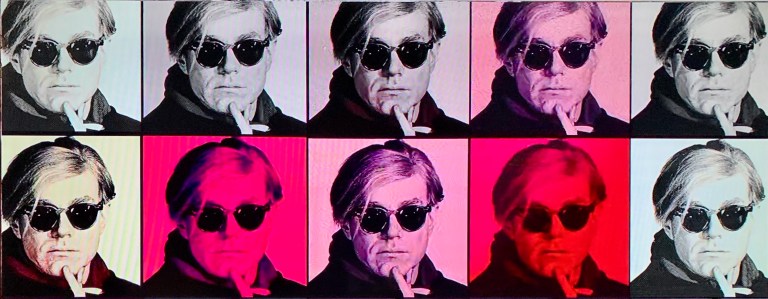
Besides his wisdoms and prophecies, the most endearing passages contain Andy’s descriptions of the food served at dinner parties he attended, and the declaration that he always enjoyed Campbell’s tomato soup with a cheese sandwich. He even tried Campbell’s dried soup. “It was good.”
Warhol’s childhood is presented in films of his mother, his protective older brother, and of his dreary neighborhood in the Oakland section of Pittsburgh, PA. In the first episode. Andy is loving and loyal to his poor Slovakian immigrant mother (who later lived with him). He suffered a childhood Illness, repressed homosexuality, and bullying due to his otherness. He found solace in church, worshipping saints and icons throughout his life.
Lured from the depressive gray mining town of Pittsburg to the colorful world of New York City in 1949 at age twenty, Warhol struggles as a fashion illustrator. In the 1950s he embraces the entire metropolis; uptown to downtown, high life and low life, saints and sinners. In the 1960s he mingles with glitterati, becoming a magnet for socialites and for underground characters; junkies, drag queens and street hustlers. He brings them a degree of fame by branding them “superstars.” Andy renders himself infamous.
Warhol voicing his diaries over rare and personal visuals brings him back to us. It make us realize how much his physical presence is truly missed. In many ways, Andy is still haunting us, like a beloved crazy old uncle.
We can see that he has been traumatized. Andy spent his lonely lifetime in childlike wonderment trying to find its meaning. He reveled in fame, but guarded his privacy. Despite inner turmoil, he loved life and was enamored by everything and everyone. It was his own doing that he is publicly known to be cold and aloof. Privately, he desperately writes in his diary, “I just have to be in love now or I’ll go crazy. I just have to feel something.” His favorite expressions were, “Oh gee!” and “Oh wow!” Andy could have been so happy, if we allowed it.
It’s incredible that someone so insecure and self-loathing was able to create a multi-media empire around his persona. As much as Warhol wanted to fit in, he knew that playing upon his weirdness was the best way to propel his work. As restauranteur Mr. Chow so accurately states in his interview, “The grandmaster uses his weakness.” When asked if he defends himself against critics Andy says, “Oh, I can’t! They’re right.”
A very important and fascinating time in Warhol’s life – the 1960s is glossed over; the Factory superstars, the screen-tests and early films. Andy’s involvement with The Velvet Underground and Nico is ignored, along with his notable friendship with Lou Reed who adopted Warhol’s cold and sarcastic interview style and media manipulation. Both Lou and Andy had such important things to say, yet neither of them were asked serious questions. This is our great loss.
See my review of Todd Haynes’ recent documentary, The Velvet Underground…
https://madelinex.com/2021/10/19/the-velvet-underground-film-review/
The glistening skyline of New York City attracted Andy because of the bleakness of his childhood. He was a collector because he felt empty. He became an awkward socialite who stood out like a sore thumb because he was lonely and felt inferior. Beautiful people awed him because he considered himself ugly. “I’m just a freak. I can’t change it. I’m too unusual.”
When he achieved an extreme level of fame, he was repelled by the ridiculous fuss being made over him by the media, and we hear him say so.
The series focusses (too much) on Andy’s sexuality or lack thereof, about which he was always secretive and indifferent. Despite lots of speculation, nothing is proven, other than that he was gay at a time when it was forbidden, and that he only lived with long-time male companions. The witnesses are no longer with us. In loyalty to Andy, they never told their stories in their lifetimes. Does it really matter what happened in his bedroom? What matters is his partners’ faithfulness to Andy, a testament to their love and respect for a beloved man.
The segments about Warhol’s relationship with Jed Johnson (a young delivery guy who was deemed too beautiful and was hired to work at the Factory) were enlightening, as were the words of his twin brother Jay. Jed was a quiet, sweet, sensitive and beautiful guy – perfect for Andy. Jed became an impeccable interior designer to the stars. All that Warhol wanted was a simple life at home with someone he loved. (“The best love story is just two love birds in a cage.”) Yet when he had achieved this with Jed, it was Andy who descended into the madness and debauchery of the Studio 54 club scene, and produced a series of jarring male nude photographs he calls “Landscapes,” prompting Jed to end the relationship after two suicide attempts, which Andy brushed off. (Jed’s death in the infamous plane crash of TWA flight 800 in the summer of 1996 is explored in the final episode).
(Photo: Jed Johnson with John Lennon 1971)
When Jed leaves, Andy immediately pursues young Paramount executive Jon Gould from Massachusetts. Gould is the focus of way too much of the series. This relationship had not been known publicly. Jon moved in with Andy, and forbid any mention of him in the diaries. They are a very romantic couple – cards, poems, flowers and hand-drawn hearts resembling children’s valentines are frequently exchanged. Ron encourages Andy to dance, and he does, when he realizes that “Nobody really notices you. “So now, I’ll be dancing.” They are happy together, attending intimate cozy parties with Jon’s family. There are lots of Gould family films, showing a happy, playful and normal Andy at home parties and skiing. Later, when Ron contracts AIDS, Andy (who is intensely fearful of hospitals) visits him every day. A devastating loss of a lover to whom he was truly dedicated.
Photo: Andy and Jon Gould

The relationship with painter Jean-Michel Basquiat is explored in depth. Andy is 20-year old Basquiat’s mentor and father figure, who has a major crush on the young artist. Film clips from 1984-1985 show them painting together, and Andy’s utmost adoration. Warhol shows his swishy, playful self and his affection in a television clip with Basquiat. Andy is flustered and suddenly catches himself. He says, “You made me smile, and you made me move.” He quickly puts up a shield once again.
Photo: Keith Haring, Warhol and Basquiat

There is jealousy in Warhol, “It reminds me of the old days when I was up there.” however, he embraces the young Basquiat. Andy and Jean-Michel joyfully collaborate on paintings, yet a New York Times critics’ response to their work together (despicably labelling Basquiat as Warhol’s mascot) tears them apart. Jean-Michel becomes devastated and distant. Andy is crushed. Basquiat died of a drug overdose in 1988 at age 27, eighteen months after Warhol’s passing.
The series delves into the corporate years, when Warhol abandoned the crazy inhabitants of his bohemian art space after being shot by radical feminist Valerie Solanas in 1968. This man survived a shooting because of who he was, and we still expected him to cope and to embrace his infamy. When he should have been isolating, he emerged, still driven despite intense fears and mental anguish.
Andy soon embraced other media, creating Interview magazine, and Andy Warhol’s TV. He became a model for Ford and Zoli. This is incredible, in light of his physical insecurity and feeling old – but he looks so cool and amazing in these clips! Yet, he feels inferior “I’ve decided I can’t wear odd things. I look like a weirdo. I’m going to stay in basic black.” He becomes anorexic.
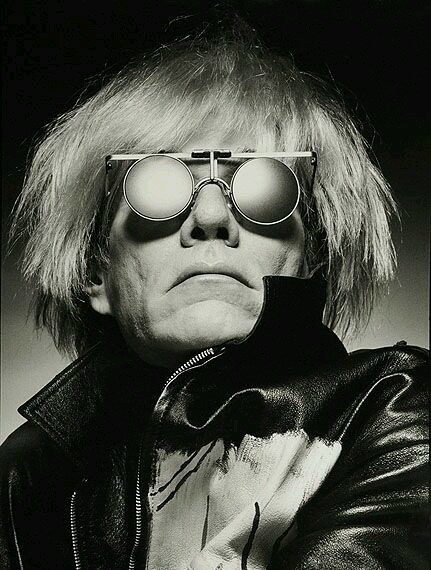
It is refreshing to hear from credible, trustworthy and insightful interviewees, all who protect the integrity of Warhol’s legacy, some of whom helped to build his empire; editor Bob Colacello and others from his Interview magazine staff, Andy’s assistant Benjamin Liu and Vincent Fremont of Andy Warhol Enterprises. Artists Jamie Wyeth, Kenny Scharf, Glenn Ligon and Julien Schnabel also speak. It was nice to hear from filmmaker John Waters and gallery owners Larry Gagosian, Jeffrey Deitch, Tony Shafrazi, Mary Boone and more. Street artist Futura 2000 shares insights, along with Fab 5 Freddy who painted Warhol’s soup cans on subway train cars. Andy’s partner Jed Johnson’s twin brother Jay, and Jon Gould’s twin (also named Jay) share their invaluable memories, as does Paige Powell (Basquiat’s girlfriend and dear friend to Andy).
Kudos to Andy’s dear friend Christopher Makos who debates with the interviewer who is trying to assign meanings where they don’t belong. Makos points out the fact that nobody cared about Liberace’s sexuality – they just came for the performance. So why was Andy endlessly hassled about it?
However, the series heavily features Andy’s corporate associations, ignoring important figures who injected Andy’s work with grit, humor and authenticity. It would have been nice to hear from Joe Dallesandro (who calls the series “a slick fairy tale”), Viva and others who were close to Andy in the 1960s. Unfortunately, not many of the Silver Factory crowd are still with us, but there are many posthumous interviews that could have been aired. We see snippets of Lou Reed’s ‘Walk on the Wild Side’ characters Holly Woodlawn, Candy Darling and Jackie Curtis, but they are not given much attention. It is odd that there is no mention of the late Brigid Berlin. Andy’s life has been “sanitized” in some respects, yet many of the dark secrets that he deliberately and miraculously kept private have been exposed. I’d rather have seen more about the Silver Factory days which shaped who he became as an artist. His diaries were dictated from 1976-1986, so that could be an excuse for the omission of so much of the past.
Marilyn, Jackie and James Dean were the most vulnerable icons. The saints of our time. Andy painted them to show us what we have forced them to become, and what we have ultimately done to them. He conveys the same messages about himself, in many self-portraits, hiding behind camouflage in later ones.
See my story: Queen of Pop -Andy’s Marilyns
https://madelinex.com/2018/03/14/queen-of-pop/
We learn that his commissioned portrait paintings of socialites and celebrities made Warhol re-think his status as an artist-for-hire. Even in the eye of the hurricane, he could clearly see the hypocrisy. Realizing that the rich are just as crazy as the poor, he is once again drawn from uptown to downtown. The new young painters (Basquiat, Keith Haring, Kenny Scharf) at first make Andy feel old and replaced, until he befriends them and enjoys their respect.

Intimidated by the advent of computers in the 1980s, he refused a computer “from a guy that was trying to give me one,” who turned out to be Steve Jobs! When Warhol meets Jobs (who gifts Sean Lennon an Apple computer at Sean’s 9th birthday party) he writes, “I felt so old and out of it with this young whiz guy right there who’d helped invent it.” Andy is amazed by how young Jobs is, and again feels old. However, rather than regretting his refusal of a computer, Andy’s displaced disappointment has him feeling blue because Keith Haring seems to have replaced him as young Sean’s “best grown-up friend.”
Photo: Sean Lennon, Steve Jobs and Andy

Warhol remained upbeat in public, but if you looked closely, the sadness was apparent in his eyes. Many of the chosen film clips clearly show this. Yet, no matter how bleak his situation was, Andy would still say, “Things could always be worse.” He was at once saintly and flawed. He simultaneously lived in joy, in reverence and in despair. He gave us colorful pop glamour, repetition, death and disaster, riots and finally, The Last Supper. A collective mirror of America.
The final episode explores his religious works. We learn that The Last Supper paintings were commissioned by Alex Iolas, who had given Andy his first solo exhibition in New York in 1952. Iolas felt that an ode to da Vinci would do well in Italy. Andy’s final trip was to Milan in 1986 to promote the work, where he was uncomfortably engulfed in a media circus. Iolas died of AIDS a month later.
Also discussed is some archaic and offensive language in the diaries, and gender politics – whether Warhol properly addressed or supported gay culture or the AIDS crisis. Why should he be expected to be public about something so personal? His lover and many friends died of AIDS. Andy lived in fear of it. There are glimpses of it in his work. We should have been more respectful and more sympathetic towards the greatest artist of our time.
After so many friends passing from AIDS, Andy deems that “Health is wealth. It’s better than companionship and love, and everything else.” The diary says that he was eating healthy after years of Campbell’s tomato soup and sandwiches. He holds onto magic crystals. Then he dies after gall bladder surgery in 1987.
Andy never got to see the huge scope of his success and eventual acceptance, which he so deeply desired. All he got was people and the media mobbing him, as if he were a rock star.
Sadly, it turned out that Andy did not have to worry about old age as much as he did. He was only 58 when he died, and his work began selling for millions of dollars. Andy would have been overwhelmed with excitement. He questioned, in his strange form of commercial haiku…
“What is art?
Does it really come out of you?
Or is it a product?
It’s complicated.”
Warhol’s funeral is described by Kenny Scharf as “The last party ever.” It’s heartbreaking to see Jed sitting in the pews. John Richardson reads the eulogy with the most poignant lines, “The callous observer was in fact a recording angel… Andy’s detachment – the distance he established between himself and the world, was above all, a matter of innocence and a matter of art.”
The last lines we hear Andy speak in the final episode are the most heart-melting. The biggest lesson he learned in life was not to look further than your own back yard for your heart’s desire. It’s the “Over the Rainbow” scenario…
It’s 1978. Bianca Jagger is Andy’s movie date. They get a cab up to 86th street where they see Saturday Night Fever. Andy says,
“Well, the movie was just great… I guess it’s the new kind of fantasy movie. You’re supposed to stay where you are.
The old movies were things like Dead End, and you had to get out of the dead end and make it to Park Avenue. And now they’re telling you that it’s better off to stay where you are, in Brooklyn. To avoid Park Ave ‘cause it would just make you unhappy.
It’s about people who would never even think about crossing the bridge.
That’s the fantasy.”
The final scene shows Andy in the old Silver Factory with members of The Velvet Underground, with his voiceover of these final words from his diary….
“And New York looked so exciting…
didn’t it?”

The series theme song is the extremely fitting ‘Nature Boy’ sung by Nat King Cole…
There was a boy
A very strange enchanted boy
They say he wandered very far
Very far
Over land and sea
A little shy and sad of eye
But very wise was he
And then one day
A magic day he passed my way
And while we spoke of many things
Fools and kings
This he said to me
“The greatest thing you’ll ever learn
Is just to love and be loved in return”
There is nothing like standing in front of all the soup can paintings at MoMA and feeling Andy’s vibes. Try it sometime!
I have spent an afternoon with Andy (and Debbie Harry), and have run into him at many events, and on the streets of New York City. He was always smiling, playful and delightful. It would have been nice to be Andy’s friend. He really needed more friends.
Also see: MY STORY: A day with Andy & Debbie
https://madelinex.com/2018/06/29/a-day-with-andy-debbie/
Despite all his unwitting prophecies, Andy never predicted that he would be famous for at least fifteen millenniums!
I couldn’t help thinking how much Lou Reed would have enjoyed having Andy brought back to us in this way, and how much Andy would have enjoyed Todd Haynes’ recent film, The Velvet Underground, which resurrected the spirit of Lou. I only hope that there is an afterlife so that they might be watching along with us.
Watch The Andy Warhol Diaries trailer:
https://www.netflix.com/title/81026142
© Madeline Bocaro 2022. No part of these materials may be copied, photocopied, reproduced, translated, re-blogged or reduced to any electronic medium or machine-readable form, in whole or in part, without prior written consent of Madeline Bocaro. Any other reproduction in any form without permission is prohibited. All materials contained on this site are protected by United States copyright law and may not be reproduced, distributed, transmitted, displayed, published or broadcast without prior written permission of Madeline Bocaro.
madelinex.com is a non-profit blog created for educational and research purposes.
Any content that may violate copyright or free usage laws will be removed immediately upon request.







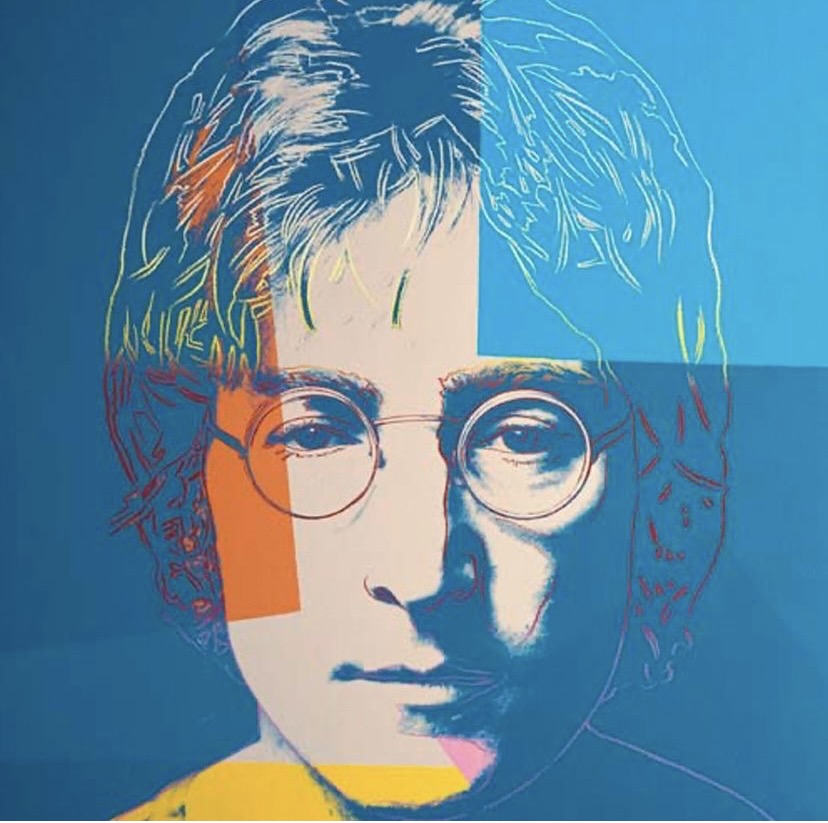




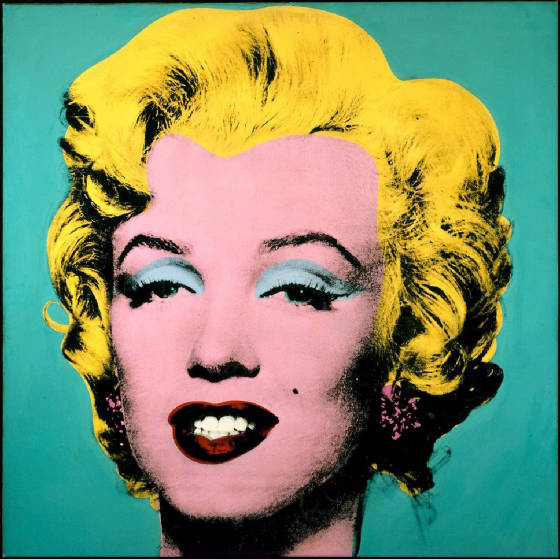

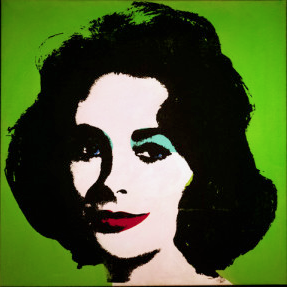


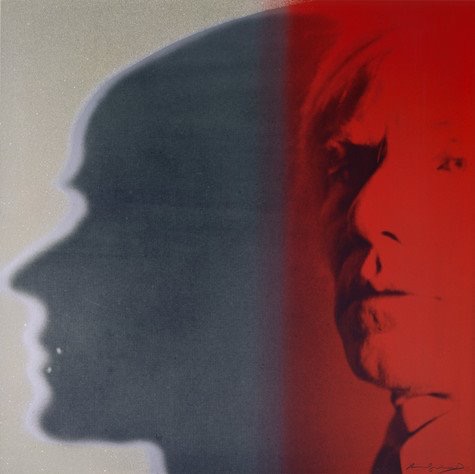




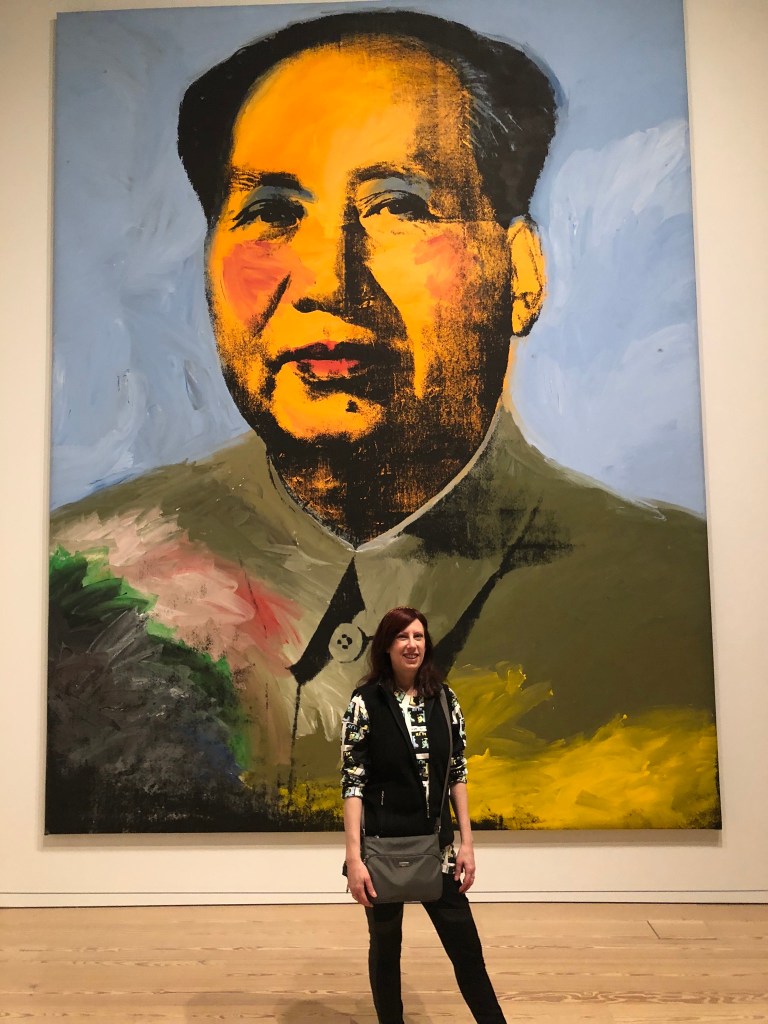




Such a great post Madeleine. Aloha!
Beautiful Madeline, as always.
A great review of The Andy Warhol Diaries! Keep in mind this was not a film about before the diaries so some things were not extensively covered
Thanks John. And that’s a good point!
I just watched The Andy Warhol Diaries on Netflix. Very fascinating documentary. So full of wonderful and creative people expressing their love and admiration for the man and the artist.
Your rewiew is spot on. Thank you. Tino Rozzo
Thanks Tina. So happy that you enjoyed it as well.
Madeline, as always your writing is over the top! I cannot begin to tell you how much I enjoy your works, from your book on Yoko to these all these tidbits or short stories you add to compliment what someone else is saying or just adding to a comment. It would be so nice if you could put all of your stories together in one book! You have lived it so you know what you are talking about. I for one enjoy every word you print. I also lived through these times and it is so refreshing to read something by someone that knows what they are talking about!
Thank you so much Michael! So happy that you are enjoying my work. I have just self-published my Yoko book and am busy self-promoting it. I would appreciate if you would give it a review on Amazon when you are finished reading.
Once that is under wraps, I might compile my writings into another book.
For anyone interested… my book is available here…
In Your Mind – The Infinite Universe of Yoko Ono
by Madeline Bocaro
An unauthorized biography
Visit Yoko’s inner and outer worlds,
her relationship with John Lennon, their love story and their work toward world peace.
Order here!
https://madelinex.com/2021/12/19/my-new-book/
Relished your perspective & commentary on this provocative new documentary. I have watched it over a dozen times & gleam more out of it with each viewing.
Warmest regards
Marc
Thank you very much Marc. It was truly a great portrait of Andy!
All the best to you,
Madelin